Have you made Chimichurri sauce at home yet? If not, today just might have to be the day! We are absolutely in love with this colorful and flavorful condiment made with fresh herbs, olive oil, vinegar, onions, and garlic.
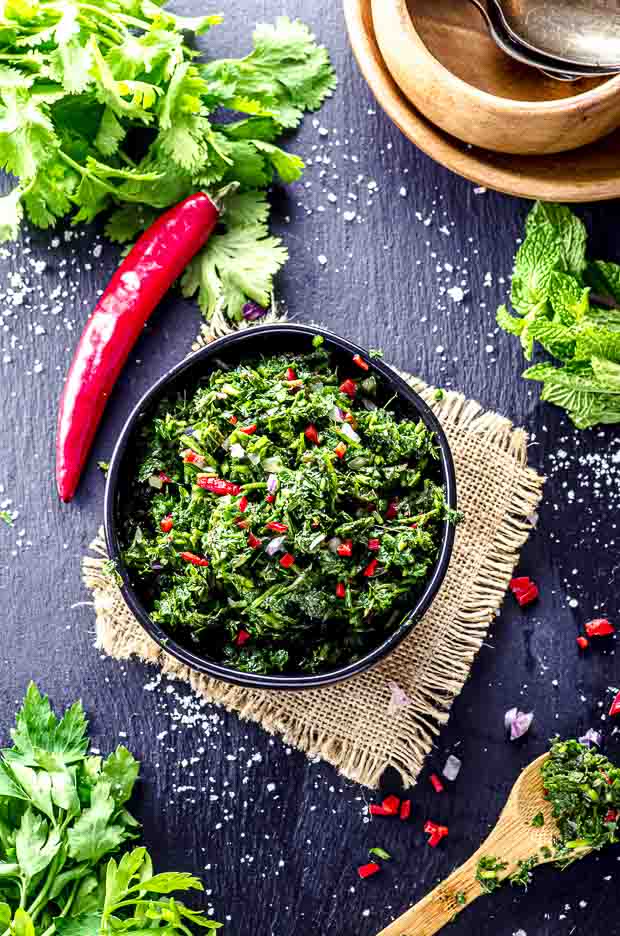
Use our Chimichurri recipe as a starting point and adjust it according to your taste. You’ll want to always have a batch of this Argentinian condiment in the refrigerator because it's perfect for grilling enhancing all of your favorite savory dishes such as grilled veggies, veggie burgers, smashed potatoes, and even edamame pasta.
What is Chimichurri?
Chimichurri is a tasty sauce made with simple fresh herbs like parsley, cilantro, mint, onion, garlic, red chili, vinegar, extra virgin olive oil, and salt. This super tasty sauce is of Argentinian origin (pronounced CHEE-MEE-CHOO-REE… try to say it 5 times fast!). It’s traditionally served with grilled steak, chicken, and vegetables or used as a marinade.
Chimichurri is usually made with raw garlic. We've made this chimichurri recipe using roasted garlic or garlic confit for a milder garlic flavor and it came out really good.
How To Use Chimichurri
It’s a great sauce, especially during the summertime grilling season. Chimichurri is usually made to accompany grilled meats and fish, but we have found vegetarian uses for this fantastic sauce. It’s light, refreshing, bright, and full of flavor. Plus, it goes with everything! We put it on potatoes, veggies, sandwiches, tacos, burrito bowls, and pasta, or use it as a salad dressing. Delicious every time!
Is Chimichuchi The Same As Pesto?
No, the flavor profile is very different. Consider Chimichurri like a tangy South American version of pesto.
Difference Between Chimichurri and Pesto
Chimichurri and pesto are similar in that they are both easy-to-make fresh, green sauces. Both sauces use fresh herbs, olive oil, and garlic, resulting in a vibrant green color. They can both be prepared in a food processor, blender, or mortar and pestle and can be used in recipes in various ways.
The main difference between Chimichurri and Pesto lies in their flavor and the herbs used. Pesto is a thicker sauce with a subtle cheese flavor. Chimichurri is a slightly spicy tangy sauce with a looser consistency than pesto.
Pesto originates from Genoa in Italy and is traditionally made with basil. On the other hand, chimichurri, hailing from Argentina, is typically a combination of parsley, cilantro, and sometimes oregano.
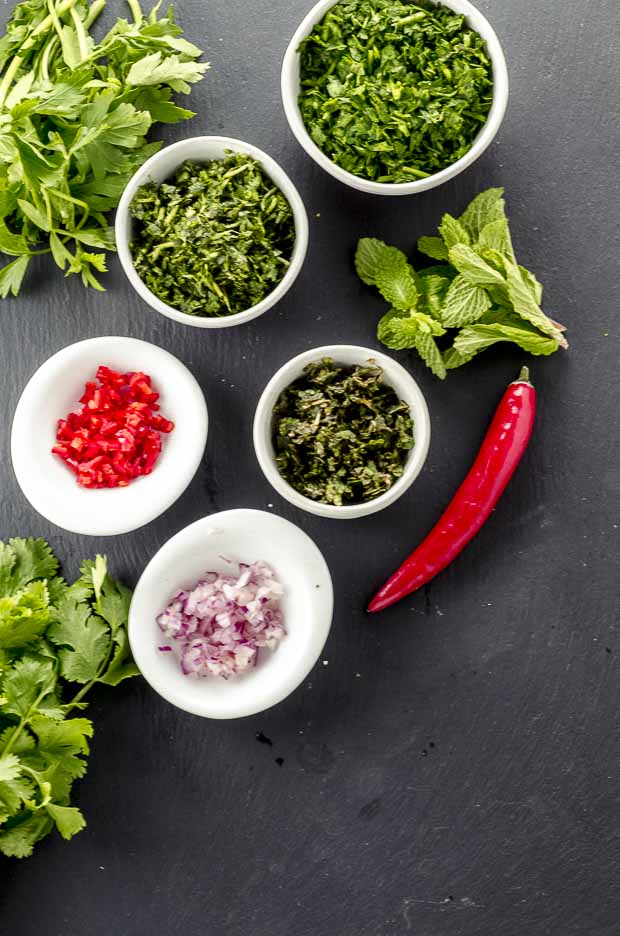
Ingredients in Chimichurri
Surprise! You probably already have these ingredients on hand, since it's mostly made from fresh herbs, which is what makes it so flavorful.
- Fresh parsley
- Fresh cilantro
- Mint leaves
- A small red hot chili
- Red onion
- Garlic
- Red wine vinegar
- Sea Salt
- Extra-Virgin Olive oil
- And if you can find it fresh oregano leaves
Our recipe uses significantly less oil than most traditional recipes. You can always add more olive oil to taste, but start with less and see how you like it!
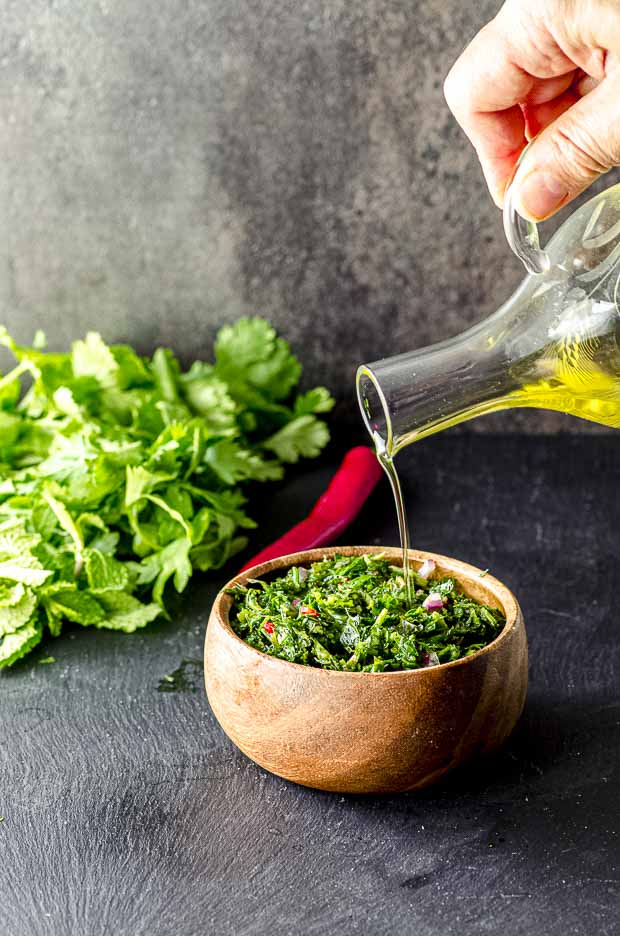
How to Make Chimichurri
Once you have the ingredients gathered, making chimichurri is as simple as combining everything together. There’s really no wrong way to make this delicious condiment! You can either finely chop the parsley, cilantro, and mint by hand, use a mortar and pestle or pulse them in a food processor, then mix them all with the remaining ingredients. Remember that everything can be adjusted to your taste: the heat, the garlic, the cilantro, it’s all up to you!
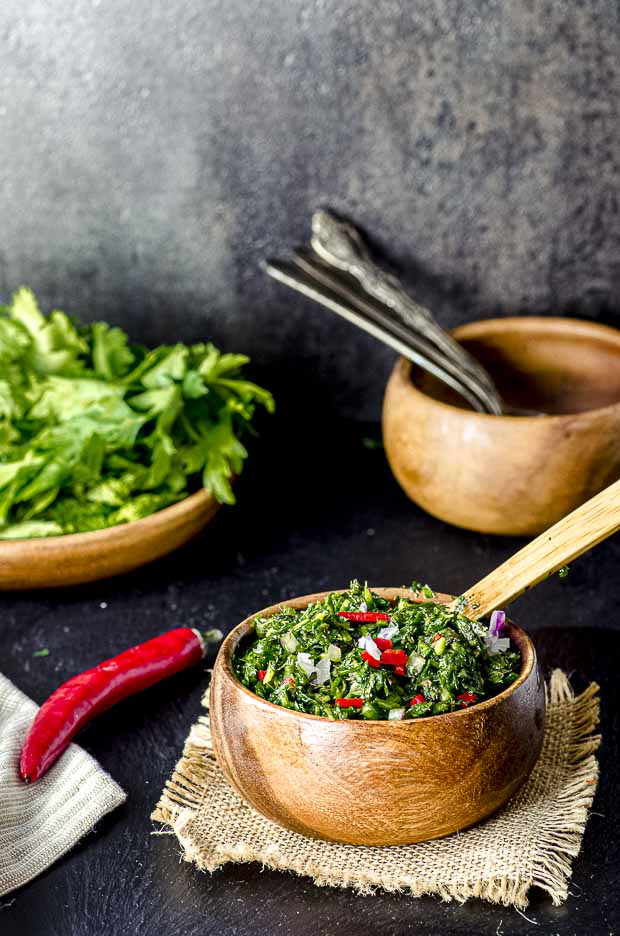
Tips For The Best Chimichurri
- Make sure the herbs you choose and fresh and flavorful
- Use a good quality extra-virgin olive oil
- Adjust the garlic an onion to your liking
- Adjust heat to your liking by adding more or less chili
Recipes to Make with Chimichurri Sauce
How to Store Chimichurri
To store chimichurri and keep it fresh for as long as possible, follow these steps:
- Transfer to a glass jar with a tight-fitting lid.
- Cover the surface of the chimichurri with a thin layer of olive oil before closing the jar. It will help preserve the vibrant green color and prevent oxidation.
- Refrigerate until ready to use.
- Because of the abundance of olive oil and vinegar, the Chimichurri should last for 1-2 weeks in the fridge. Before enjoying check for signs of spoilage such as mold, off odors, or sliminess. If you notice any of these signs, discard it immediately.
- Always use a clean utensil and don't double dip. In order to prevent spoilage always use clean utensils and don't cross-contaminate with other foods or sauces. If you don't plan on using the whole sauce in one sitting scoop the sauce into a small bowl. If it's not all gone put it back in the fridge in a separate container
- To freeze chimichurri pour the sauce into an ice cube tray or small freezer-safe container and freeze. Frozen chimichurri will last for several months, but it won't have the same fresh flavor as freshly made.
Did you like our Chimichurri Recipe?
If you enjoyed this recipe, it would help us tremendously if you left us a star rating in the comments below or on the recipe card. Do you have any questions about the recipe? Do you need a swap for any of the ingredients? We are here to help, just leave us a question in the comments below.
Print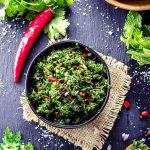
Chimichurri - A Fresh Sauce from Argentina
- Total Time: 5 minutes
- Yield: 3 ½ cups - 20 servings 1x
- Diet: Vegan
Description
Chimichurri is a super tasty uncooked sauce made with simple fresh herbs like parsley, cilantro, mint with the addition of onions, garlic, chili, vinegar, olive oil and salt. This condiment is of Argentinian origin and it's traditionally served with grilled meats and vegetables.
Ingredients
- 2 bunches of fresh flat-leaf parsley, about 1 cup tightly packed chopped parsley
- 2 bunches of fresh cilantro, about 1 cup tightly packed chopped cilantro ( you can use parsley again if you don't like cilantro) - See Note 1
- 1 cup of fresh mint leaves
- 1 small red hot chili, see images as a reference. Remember the smaller the chili the hotter it will be. See note 4
- ½ small red onion or 1 shallot chopped really small. About 2 tbsp, chopped
- ¼ cup red wine vinegar or apple cider vinegar
- ½ cup extra virgin olive oil ( See note 3)
- ¼ tsp sea salt
- Garlic cloves, raw (2-3 cloves), roasted (4-6 cloves) or garlic confit( 4-6 cloves) depending on your taste ( See Note 2)
Instructions
- Finely chop parsley, cilantro and mint in either a food processor or my hand
- In a bowl add the rest of the ingredients and mix well until well combined
- Store in a glass jar with a lid in the refrigerator for a month
Notes
- You can make Chimichurri as hot or as mild as you would like. You can control the amount of heat by adding more or fewer chili peppers or by selecting hotter or milder peppers.
- If you have been following our blog for a while you know that we don't use raw fresh garlic. Even though we love the flavor we don't like the way the flavor lingers in our mouth for a couple of days. That's why we always prefer to use roasted garlic or garlic confit ( garlic cooked slowly in abundant olive oil until really soft)
- We used significantly less oil than in traditional Chimichurri sauce recipes, so more can be added to taste.
- If you don't have a fresh chile pepper you can use hot red pepper flakes.
This post was originally published in August 2020.
- Prep Time: 5 minutes
- Category: condiment
- Method: raw
- Cuisine: South American
Nutrition
- Serving Size: 2 tablespoons
- Calories: 57
- Sugar: 0.2
- Sodium: 33
- Fat: 5.7
- Saturated Fat: .8
- Unsaturated Fat: 4.9
- Trans Fat: 0
- Carbohydrates: 1.1
- Fiber: .5
- Protein: .3
- Cholesterol: 0


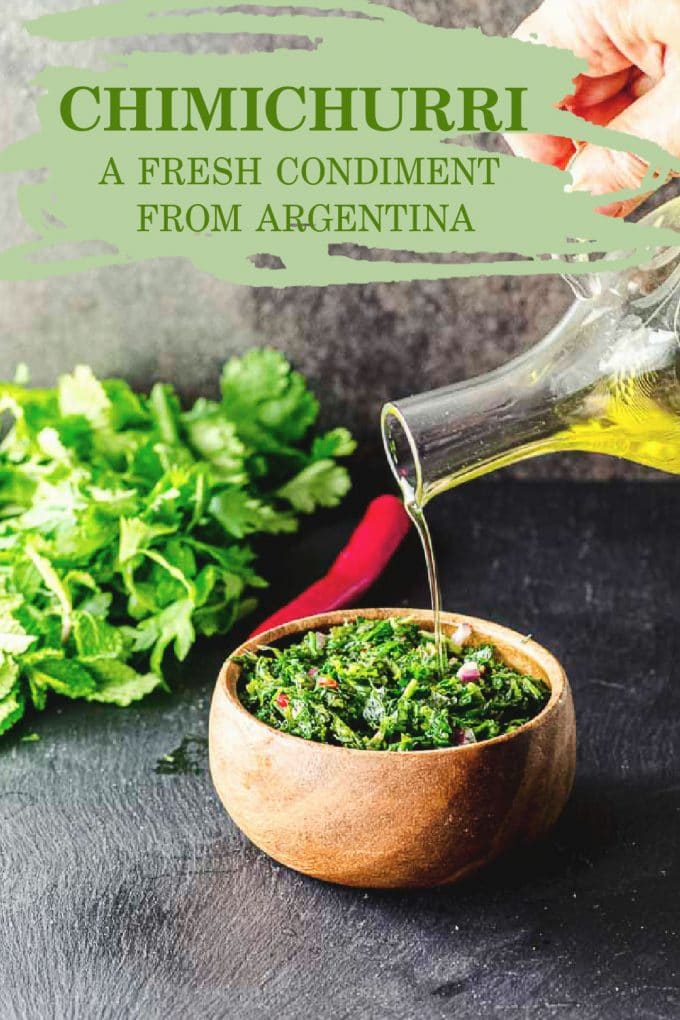
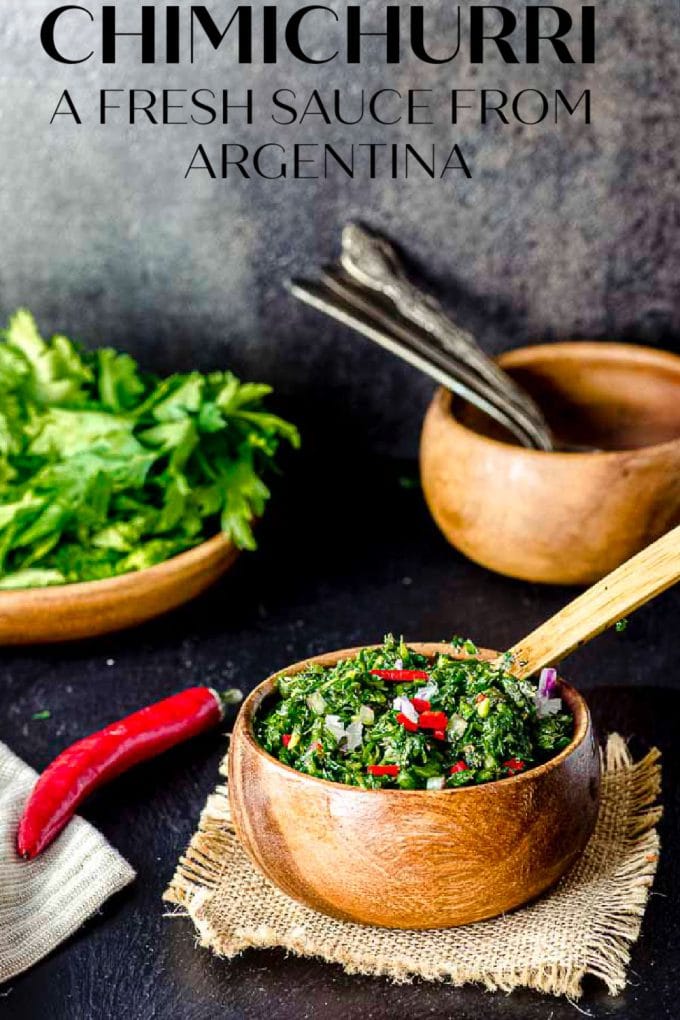
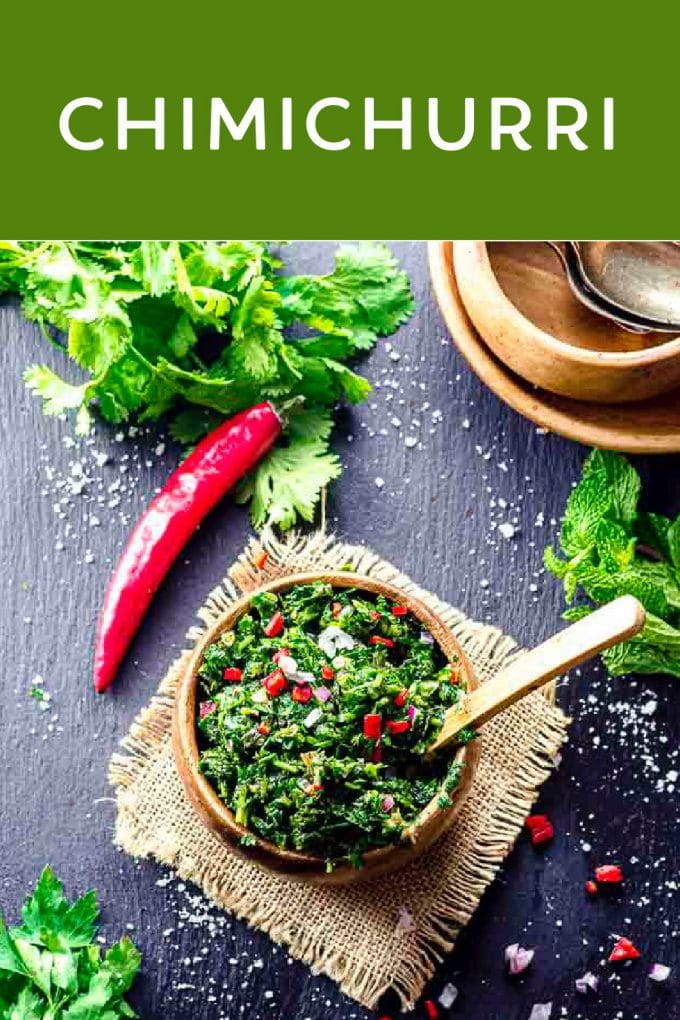
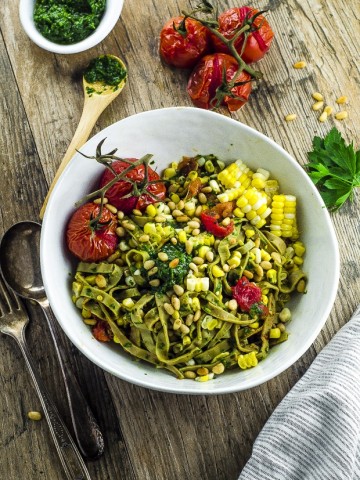
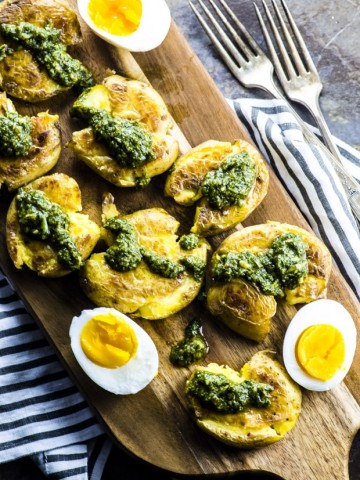
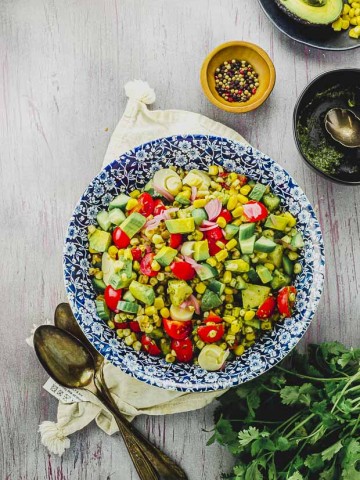
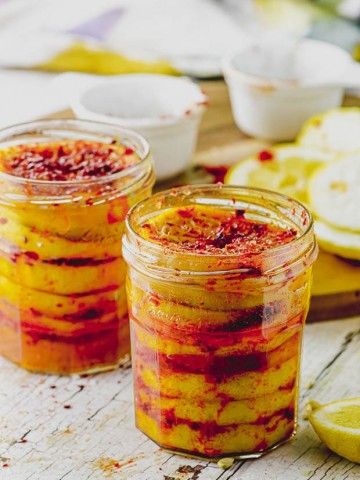
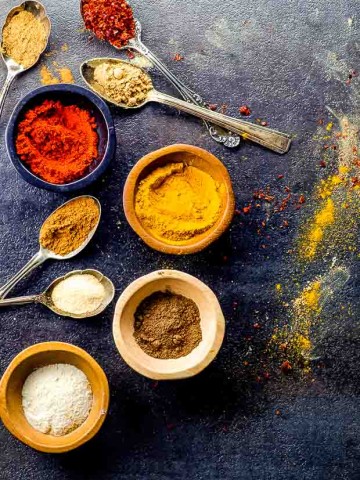
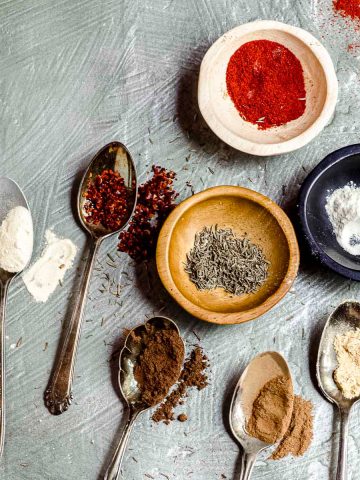
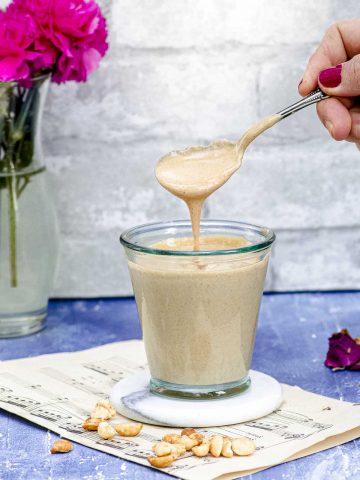
Jesse Ford says
Thanks for talking about the variety of food that chimichurri can be paired with. My son-in-law recently introduced us to this delicious sauce and I wanted to know more about it. I might have to go buy some so I can try it with even more foods.